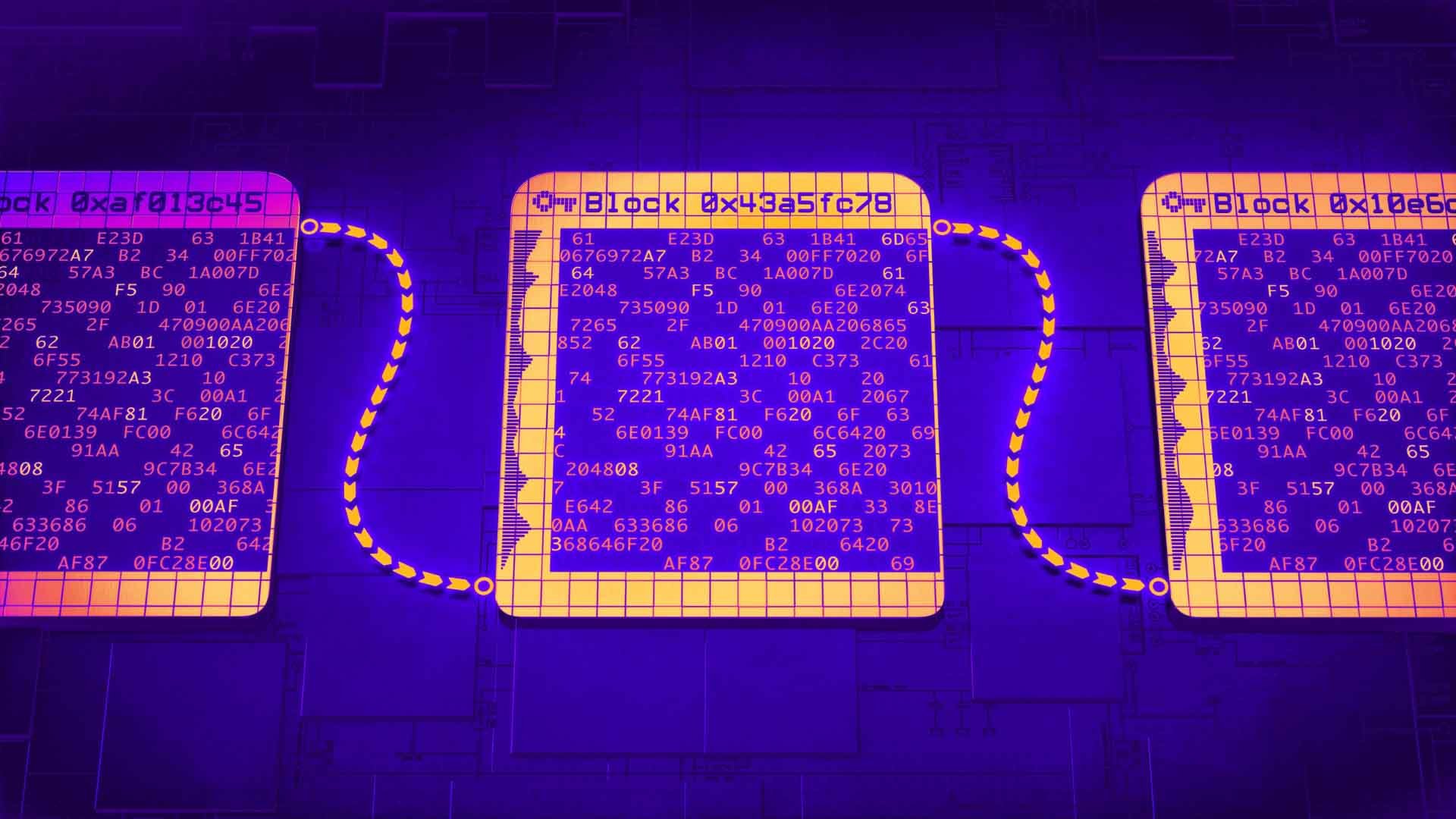Blockchain Technology, stands as a revolutionary force, promising to reshape industries and redefine the way we conduct transactions, store data, and establish trust in the digital age. From its inception with Bitcoin to its widespread adoption across various sectors, blockchain technology has captivated the imagination of innovators, entrepreneurs, and consumers alike. In this article, we’ll delve into the intricacies of blockchain technology, exploring its principles, applications, and potential impact on the future of business and society.

Unraveling the Power of Blockchain Technology
Understanding Blockchain Technology
At its core, blockchain technology is a decentralized, distributed ledger system that enables secure and transparent transactions without the need for intermediaries like banks or governments. The blockchain consists of a chain of blocks, each containing a record of transactions that are cryptographically linked and immutable. This ensures the integrity and transparency of the data stored on the blockchain, making it resistant to tampering and fraud.
Principles of Blockchain Technology
- Decentralization: Blockchain operates on a decentralized network of computers, known as nodes, which collectively maintain and validate the integrity of the blockchain. This decentralized structure eliminates the need for a central authority, allowing for greater transparency, resilience, and censorship resistance.
- Transparency: All transactions recorded on the blockchain are visible to all participants in the network, ensuring transparency and accountability. This transparency builds trust among users and reduces the risk of fraudulent activity.
- Security: Blockchain utilizes cryptographic techniques to secure transactions and protect the integrity of the data stored on the ledger. Each block in the blockchain is cryptographically linked to the previous block, creating a tamper-resistant and verifiable record of transactions.
- Immutability: Once recorded on the blockchain, transactions cannot be altered or deleted, ensuring the permanence and integrity of the data. This immutability feature provides a high degree of trust and reliability, particularly in industries where data integrity is critical.
Applications of Blockchain Technology
Cryptocurrencies: Blockchain technology gained prominence with the emergence of Bitcoin, the first decentralized cryptocurrency. Today, blockchain is the underlying technology behind a multitude of cryptocurrencies, facilitating secure and efficient peer-to-peer transactions.
Supply Chain Management: Blockchain is increasingly being used to track and trace the movement of goods across supply chains, enabling greater transparency, efficiency, and accountability. By recording each step of the supply chain on the blockchain, companies can verify the authenticity and origin of products and streamline processes.
Financial Services: Blockchain has the potential to revolutionize the financial services industry by offering faster, cheaper, and more secure alternatives to traditional banking and payment systems. Blockchain-based platforms like Ethereum enable the creation of smart contracts, self-executing contracts with the terms of the agreement directly written into code.
Identity Management: Blockchain technology can be used to establish secure and verifiable digital identities, reducing the risk of identity theft and fraud. By storing personal information on the blockchain, individuals can maintain greater control over their data and selectively share it with trusted parties.
The Future of Blockchain Technology
As blockchain technology continues to evolve and mature, its potential applications are virtually limitless. From streamlining administrative processes to revolutionizing global trade, blockchain has the power to reshape industries and empower individuals in unprecedented ways. However, challenges such as scalability, interoperability, and regulatory compliance must be addressed to unlock the full potential of blockchain technology and ensure its widespread adoption.
Conclusion
In conclusion, blockchain technology represents a paradigm shift in how we transact, communicate, and trust in the digital age. With its principles of decentralization, transparency, security, and immutability, blockchain has the potential to revolutionize industries, disrupt traditional business models, and empower individuals around the world. As we continue to explore the possibilities of blockchain technology, one thing is certain: the future holds endless opportunities for innovation and transformation in the blockchain-powered world.
Exploring the Pros and Cons of Blockchain Technology
Blockchain technology has emerged as a disruptive force with the potential to revolutionize industries and transform the way we conduct transactions, manage data, and establish trust in the digital age. While blockchain offers numerous advantages, it also presents challenges and limitations that must be carefully considered. In this article, we’ll delve into the strengths and weaknesses of blockchain technology, exploring its benefits and drawbacks from various perspectives.

Advantages of Blockchain Technology:
- Decentralization: Blockchain operates on a decentralized network of computers, reducing the reliance on centralized authorities and intermediaries. This decentralized structure enhances transparency, security, and resilience, as there is no single point of failure.
- Transparency and Immutability: All transactions recorded on the blockchain are visible to all participants in the network and cannot be altered or deleted once confirmed. This transparency and immutability ensure the integrity of the data stored on the blockchain, reducing the risk of fraud and manipulation.
- Security: Blockchain utilizes cryptographic techniques to secure transactions and protect the integrity of the data stored on the ledger. Each block in the blockchain is cryptographically linked to the previous block, creating a tamper-resistant and verifiable record of transactions.
- Efficiency and Cost Savings: Blockchain streamlines processes by eliminating the need for intermediaries and manual reconciliation, resulting in faster transaction times and reduced administrative costs. Smart contracts, self-executing contracts with the terms of the agreement directly written into code, automate processes and minimize the need for human intervention.
- Global Accessibility: Blockchain technology transcends geographical boundaries, allowing for seamless peer-to-peer transactions and interactions across borders. This global accessibility opens up new opportunities for financial inclusion, cross-border trade, and collaboration on a global scale.
Disadvantages of Blockchain Technology:
- Scalability: One of the main challenges facing blockchain technology is scalability—the ability to handle a large number of transactions efficiently. As blockchain networks grow in size and complexity, they may encounter limitations in transaction throughput and processing speed.
- Energy Consumption: Blockchain mining, the process by which new blocks are added to the blockchain, requires significant computational power and energy consumption. The energy-intensive nature of blockchain mining has raised concerns about its environmental impact and sustainability.
- Regulatory Uncertainty: The regulatory landscape surrounding blockchain technology is still evolving, leading to uncertainty and ambiguity in terms of legal and compliance requirements. Regulatory challenges vary by jurisdiction and may impact the adoption and implementation of blockchain solutions.
- Interoperability: Interoperability, the ability of different blockchain networks to communicate and interact with each other, remains a significant challenge in the blockchain ecosystem. Lack of standardization and compatibility between blockchain platforms hinders seamless integration and collaboration.
- Security Risks: While blockchain technology offers enhanced security features, it is not immune to security risks and vulnerabilities. Smart contract bugs, hacking attacks, and insider threats pose potential risks to the integrity and security of blockchain networks and applications.
Conclusion:
In conclusion, blockchain technology offers numerous advantages, including decentralization, transparency, security, efficiency, and global accessibility. However, it also presents challenges such as scalability, energy consumption, regulatory uncertainty, interoperability, and security risks. As blockchain continues to evolve and mature, addressing these challenges will be essential to realizing its full potential and unlocking the benefits of decentralized innovation in the digital age.
The Origins of Blockchain Technology: Tracing the Evolution of a Revolutionary Concept
Blockchain technology, hailed as one of the most transformative innovations of the digital age, has a rich and fascinating history that traces back to the early 2000s. While it gained jpslot login widespread recognition with the advent of Bitcoin in 2009, the roots of blockchain can be found in various concepts and technologies that preceded it. In this article, we’ll explore the origins of blockchain technology, from its conceptual foundations to its emergence as a revolutionary force in the world of finance and beyond.

Conceptual Foundations:
The concept of a decentralized, tamper-resistant digital ledger can be traced back to the early 1990s, with the work of researchers and cryptographers exploring ways to secure digital transactions and information. One notable precursor to blockchain technology is the Merkle tree, a data structure developed by computer scientist Ralph Merkle in 1979, which provides a secure way to verify the integrity of data stored in a distributed system.
Cypherpunk Movement:
The cypherpunk movement of the 1990s played a significant role in shaping the ideological underpinnings of blockchain technology. Cypherpunks, a loosely-knit group of privacy advocates and cryptographers, advocated for the use of cryptographic techniques to protect individual privacy and secure online communications. Their discussions and writings laid the groundwork for concepts such as digital cash and decentralized systems that would later influence the development of blockchain technology.
Bitcoin and the Birth of Blockchain:
The breakthrough moment for blockchain technology came with the introduction of Bitcoin, the world’s first decentralized cryptocurrency, in 2009. Bitcoin was created by an anonymous individual or group of individuals using the pseudonym Satoshi Nakamoto, who outlined the principles of blockchain technology in the Bitcoin whitepaper titled “Bitcoin: A Peer-to-Peer Electronic Cash System.”
Key Innovations of Blockchain:
- Decentralization: Blockchain operates on a decentralized network of computers, known as nodes, which collectively maintain and validate the integrity of the blockchain. This decentralized structure eliminates the need for a central authority, making it resistant to censorship and control.
- Cryptographic Security: Blockchain utilizes cryptographic techniques to secure transactions and protect the integrity of the data stored on the ledger. Each block in the blockchain is cryptographically linked to the previous block, creating a tamper-resistant and verifiable record of transactions.
- Consensus Mechanisms: Blockchain employs consensus mechanisms, such as proof-of-work (PoW) or proof-of-stake (PoS), to achieve agreement among participants in the network on the validity of transactions. These consensus mechanisms ensure that all nodes in the network reach consensus on the state of the blockchain.
Evolution and Expansion:
Since the introduction of Bitcoin, blockchain technology has evolved and expanded beyond its original use case as a digital currency. New blockchain platforms and protocols have emerged, offering a wide range of applications across industries such as finance, supply chain management, healthcare, and more. Ethereum, launched in 2015, introduced the concept of smart contracts, programmable contracts that automatically execute predefined actions when certain conditions are met, further expanding the potential of blockchain technology.
Conclusion:
In conclusion, the origins of blockchain technology can be traced back to a combination of conceptual foundations, technological innovations, and ideological principles that emerged over several decades. From its roots in cryptography and decentralized systems to its breakthrough moment with the introduction of Bitcoin, blockchain technology has become a powerful tool for securing transactions, fostering trust, and enabling innovation in the digital age. As blockchain continues to evolve and mature, its potential to revolutionize industries and transform the way we interact with data and value remains as promising as ever.
Read More Article About “Catherine’s Mastery: A Beacon of Hope & Elegance in Royalty“

